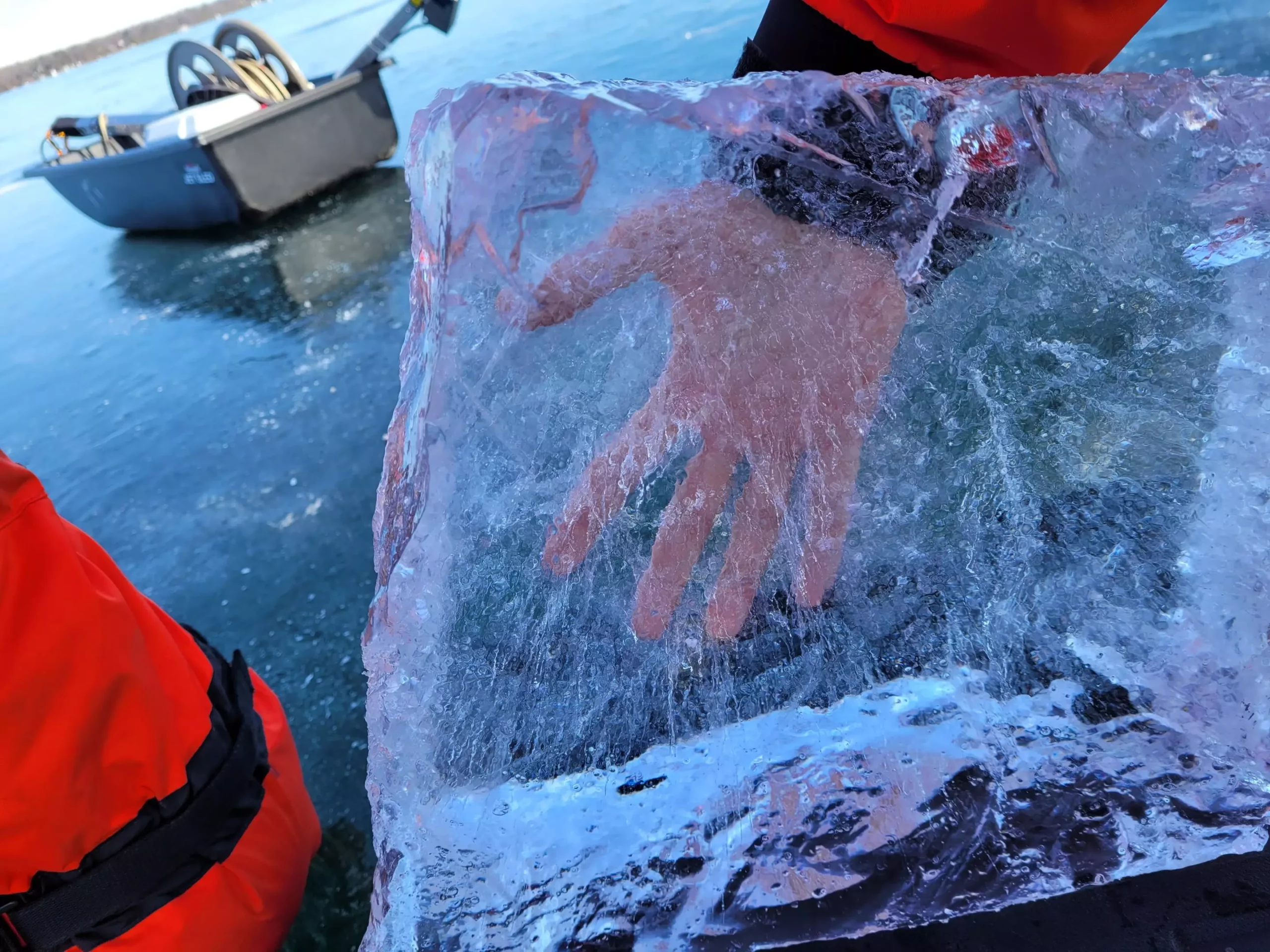As temperatures gradually rise, the allure of frozen lakes and rivers beckons to outdoor enthusiasts ready for winter activities. However, an emerging body of research warns of the hidden dangers that warmer winters pose to ice safety. A recent study from York University sheds light on two main types of ice: white ice and black ice. White ice appears opaque and less dense, filled with numerous air bubbles that reduce its strength. In contrast, black ice is transparent and formed from tightly packed layers of ice crystals, making it far more robust and capable of supporting significant weight. The dichotomy between these two types of ice is critical; as the climate changes, the balance between these forms is disrupted, with significant implications for safety.
The study reveals a troubling trend: unpredictable warmer conditions are leading to thinner layers of black ice and a thicker accumulation of white ice. This combination effectively creates incredibly dangerous scenarios for people engaging in winter sports such as ice fishing, skating, and snowmobiling. As York University’s Professor Sapna Sharma notes, the importance of ice quality cannot be overstated, as it impacts both the physical safety of individuals and the ecological health beneath the surface. The seasonal cycle of ice formation is shortening, yet deciphering the evolving characteristics of lake ice has become essential. No longer can we rely solely on traditional metrics like thickness to determine safety.
The widely held belief that thicker ice equates to safety is misleading, as recent findings indicate an increasing prevalence of weaker white ice layers. Researchers have established that a minimum of 10 centimeters (four inches) of black ice is typically required for a person’s safety. However, the growing prevalence of white ice necessitates a recalibrated understanding of what constitutes “safe” ice. If a lake has primarily white ice, a simplistic assessment based just on thickness can lead to tragic outcomes. It is becoming crucial for individuals to use reliable means, such as measuring the ice with a measuring tape, and to err on the side of caution by doubling the recommended thickness evaluation.
The risks connected to unstable ice conditions are tangible. Recent incidents in Canada and Finland highlight the life-threatening consequences of underestimating ice quality. In Canada, six individuals tragically lost their lives due to thin ice conditions just last December. In Finland, similar incidents claimed four lives this past winter alone. These fatalities prompt a stark reminder that even seasoned winter activity enthusiasts can be caught off-guard by deceptive appearances. The underlying severity of the situation calls for immediate attention and adaptation to a new reality presented by climate change; it’s not merely localized but part of a broader global phenomenon.
The ramifications of deteriorating ice quality extend far beyond human safety and encompass significant ecological effects as well. Studies indicate that the increased prevalence of white ice obstructs essential sunlight from reaching aquatic plants, thereby jeopardizing the health of entire ecosystems. Phytoplankton and other vital organisms require light for photosynthesis—they’re foundational to aquatic food webs. Consequently, the relationship between changing ice dynamics and ecological health must be considered as researchers attempt to understand the full scope of climate change impact.
In light of these findings, the call from researchers for a structured and sustained approach to ice monitoring is resounding. Accurate and regular data collection concerning ice quality, particularly distinguishing between white and black ice, is crucial in formulating safety guidelines and understanding ecological shifts. Without focused studies and ample data, understanding the dimensional qualities of ice in our lakes and rivers will remain daunting.
As pleasant as a sunny day on the ice may seem, the reality of warming winters and compromised ice integrity is a growing concern that all outdoor enthusiasts must reckon with. As the nature of winter changes, being informed and cautious is vital. By investing in research and prioritizing safety, we can adapt to the evolving landscape of frozen waters. Ultimately, recognizing the danger that lies beneath the surface and taking proactive measures could help prevent tragedies and ensure the safety of all who venture onto the ice, preserving not only human lives but also the delicate ecosystems below.


Leave a Reply